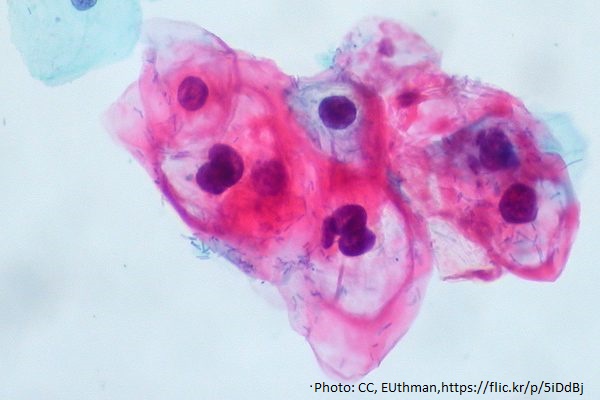Author: Cynthia Jackson
I am a registered nurse working on my BSN from Frostburg State University. I love living in Garrett County!
Expert Perspective: 1-in-4 U.S. men has HPV strains linked to cancer
Erin McHenry January 25, 2017 1:46 pm Last week, a study published in JAMA Oncology revealed one in four men in the U.S. are infected with human papilloma virus (HPV). And, that’s just the people with the cancer-causing strains. HPV is the leading cause of cervical cancer in women, and also a leading cause of anal and oropharyngeal cancers, especially in men. In fact, some studies have hypothesized that oral or oropharyngeal cancers (neck & throat) will soon become the most common HPV-related cancers. Unfortunately, there is no widely-implemented screening test for HPV in men, so early detection can be difficult. And, with one-fourth of the U.S. male population infected with a cancer-causing strain of the virus, HPV could continue to spread and affect cancer outcomes. HPV vaccination, currently recommended for all 11-12 year olds, provides primary prevention against the several strains of the virus. “We’re doing better with getting more boys vaccinated but vaccination coverage still remains far below goals. HPV vaccine can protect males from multiple types of cancer as well as genital warts,” said Annie-Laurie McRee, Dr.P.H., assistant professor in the University of Minnesota Medical School’s Department of Pediatrics. McRee is also a Masonic Cancer Center member. She specializes in HPV vaccination and how provider recommendations play a role in vaccination uptake. The JAMA Oncology study, from the Womack Army Medical Center in North Carolina, found that 45 percent of the 1,868 men studied had HPV, but only 10 percent of the study group was vaccinated. “This study highlights the importance of vaccinating both boys and girls for HPV and underscores the need for vaccination at the recommended age when the vaccine offers maximum protection,” said McRee. What steps should be taken moving forward? McRee added: “Even though it has been available for males since 2009, boys are still less likely than girls to receive a healthcare provider’s recommendation to get vaccinated against HPV, and the main reason parents report that their son has not received HPV vaccine is that they were either unaware it was available for boys or that they have not received a recommendation from a provider. Given the importance of a strong provider recommendations for HPV vaccine uptake, this is a critical gap to address. It also means, though, that providers have the power to help parents protect their sons against HPV by simply making that recommendation and we know a lot at this point about how to do that well (for example, by making age-based recommendations to all 11-12 year olds and by offering it along with other adolescent vaccines).” McRee added that providers should take any opportunity to discuss vaccination, not just well-child visits or annual check-ups.

